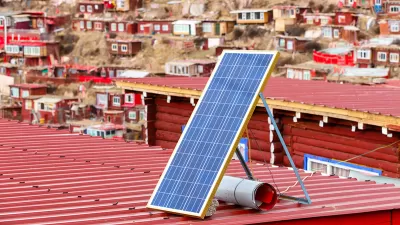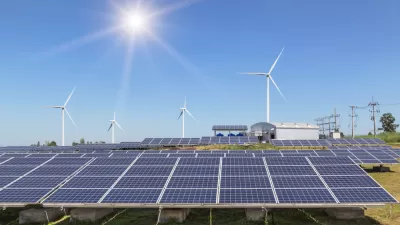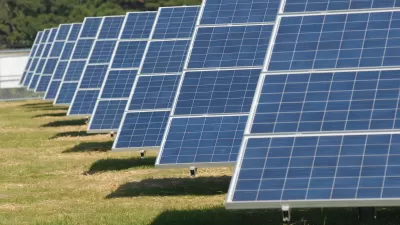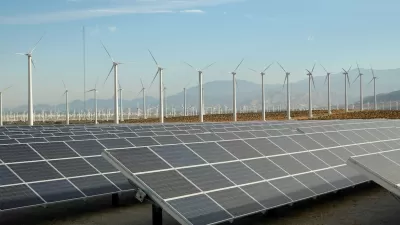Fears of a US trade war and a slowing economy have translated into fewer subsidies for solar and wind energy in China.

China is the world’s largest market for renewable energy, but the growth of that energy in the country is slowing. The Chinese government has reduced subsidies for solar and wind, and the energy resources the country does have can’t always be easily transmitted. "Although major solar and wind power installations in China’s more far-flung provinces can produce large amounts of renewable energy, a lack of high-voltage transmission infrastructure means that a sizeable percentage of that green energy still goes unused," Michael Standaert reports for Yale Environment 360. These provinces may have ideal conditions for generating power, but they are isolated from the industrial and population centers that consume the power.
The renewable energy industry has a double challenge in dealing with new policies. "[W]hile curtailing subsidies for wind and solar power, the central government has sharply increased financial support for what it calls “new energy” extraction, which includes fracking of shale gas and separating methane from coal," Standaert writes This has big implications for the world’s biggest carbon emitter. "After plateauing from 2014 to 2016, China’s carbon dioxide emissions have risen in the last several years, with an estimated 4 percent increase in the first half of 2019," Standaert reports.
Kevin Tu, former China program manager at the International Energy Agency, believe this change in policy is likely to continue, driven by fears of slowing economic growth, especially in the context of a trade war with the United States.
FULL STORY: Why China’s Renewable Energy Transition Is Losing Momentum

Planetizen Federal Action Tracker
A weekly monitor of how Trump’s orders and actions are impacting planners and planning in America.

Maui's Vacation Rental Debate Turns Ugly
Verbal attacks, misinformation campaigns and fistfights plague a high-stakes debate to convert thousands of vacation rentals into long-term housing.

Restaurant Patios Were a Pandemic Win — Why Were They so Hard to Keep?
Social distancing requirements and changes in travel patterns prompted cities to pilot new uses for street and sidewalk space. Then it got complicated.

In California Battle of Housing vs. Environment, Housing Just Won
A new state law significantly limits the power of CEQA, an environmental review law that served as a powerful tool for blocking new development.

Boulder Eliminates Parking Minimums Citywide
Officials estimate the cost of building a single underground parking space at up to $100,000.

Orange County, Florida Adopts Largest US “Sprawl Repair” Code
The ‘Orange Code’ seeks to rectify decades of sprawl-inducing, car-oriented development.
Urban Design for Planners 1: Software Tools
This six-course series explores essential urban design concepts using open source software and equips planners with the tools they need to participate fully in the urban design process.
Planning for Universal Design
Learn the tools for implementing Universal Design in planning regulations.
Heyer Gruel & Associates PA
JM Goldson LLC
Custer County Colorado
City of Camden Redevelopment Agency
City of Astoria
Transportation Research & Education Center (TREC) at Portland State University
Jefferson Parish Government
Camden Redevelopment Agency
City of Claremont





























